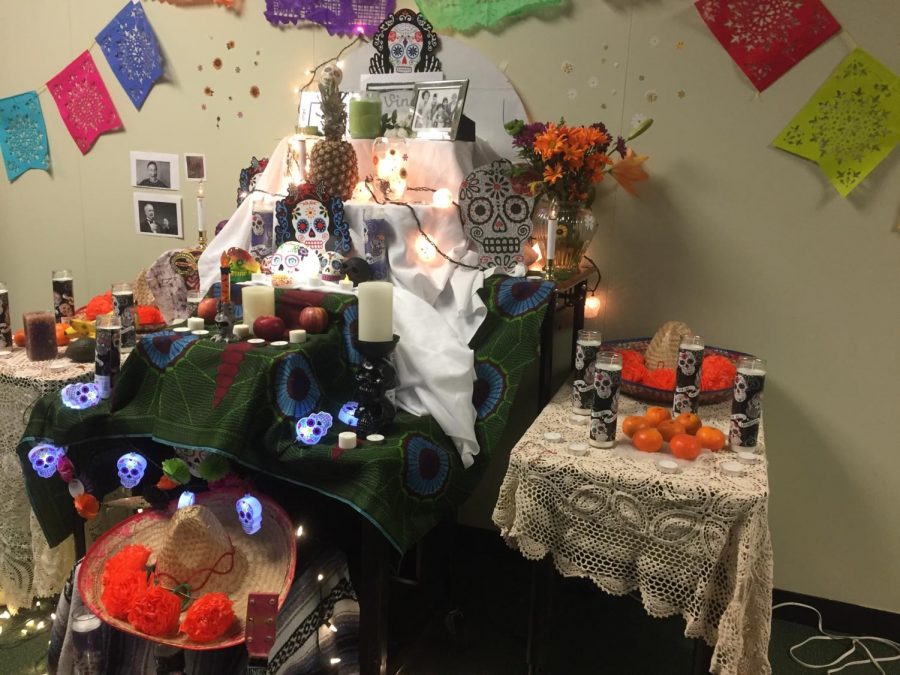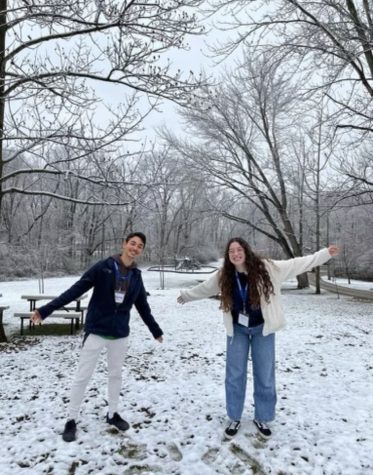Spanish classes celebrate Day of the Dead
WELCOME. Vanags’ altar is directly outside her classroom. Her two AP Spanish classes worked together to create the altar. It is built on top of a table, a couple of desks, and some boxes that are all covered with a decorative table cloth.
Día de los Muertos (“Day of the Dead” in English) is a holiday celebrated in much of Latin America. It is on Nov. 1 and 2. Oftentimes, Spanish classes as SHS celebrate and learn a bit about Mexico and other regions that celebrate the holiday.
Altars are a typical tradition that accompany Día de los Muertos. They are meant to welcome spirits, and are decorated with food, water, candles, photos of the deceased, and other decorations.
Mrs. Lisa Vanags and Ms. Meredith Blackmore’s AP Spanish classes have created altars that are currently out in the language hallway. Each student in AP Spanish was responsible for bring in an item or two.
“I brought apples in for my altar. I’m in Mrs. Vanags’ class and a lot of people were bringing in decorative items.
“Other than looking pretty, the purpose of an altar is to welcome the deceased, so food and practical necessities do belong on an altar. That’s why I brought apples,” said Shayna Kling, 11.
The altars in the language hallway are adorned with skeletons, papel picado (a decorative paper cut with intricate designs), and a variety of other decorations.
“Last year in Spanish IV, everyone in my class was required to put on face paint to look like Catrina. It felt sort of silly, but it was really fun. I got very into making cool designs with the face paint,” said Neha Sunil, 11.
Catrina is a symbol of Día de los Muertos. She is a skeleton woman who wears elegant clothing. In many Spanish-speaking countries, people dress up for the holiday either as Catrina or a skeleton.
Other Spanish classes are celebrating the holiday with parties in class.
While Día de los Muertos may seem like an odd celebration to those who first hear of it, it is not a morbid holiday at all. It is not simply a Mexican version of Halloween either. It is a celebration of love and respect for the deceased.
“Through taking Spanish for five years, I’ve grown to appreciate the holiday as a nice break from Spanish class to celebrate some of the culture of the Spanish-speaking world,” Kling said.










